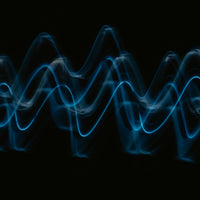We’ve all been there. You have a big event scheduled for the evening, but you’re wide awake at 5am. What do you do to make sure you’re not a sleep deprived zombie by 6pm?
You can make up the difference with a good nap, says Dr. Jeffrey Durmer, MUD\WTR’s sleep advisor. A sleep scientist and physician, Durmer works with Olympic athletes and often recommends they take naps to optimize performance.
He says sleep duration refers to how long you sleep in a 24 hour period, and it includes both nighttime and daytime sleep.
Most medical experts recommend that adults get in between 7 and 9 hours of shut-eye.
“If you needed seven and a half hours of sleep, but only got six hours that night, that’s a day when you might be able to make up the sleep debt with a 30-90 minute nap,” Durmer said.
Getting less than the recommended amount of sleep can impinge on your health. Chronic sleep deprivation can lead to an increased risk of chronic disease, as well as car accidents, Durmer said.
When’s the Best Time to Nap?
Napping is tied to the circadian rhythm, which is specific to each individual brain, Durmer said. If you regularly wake up around 7am, you may feel an increased need for sleep in the early afternoon between 1pm and 3pm. For most of us, that’s when our body is primed to take a nap, Durmer said. If you’re a night owl on the other hand, you might feel an energy lull around 3pm, and that’s when you’d want to lie down for a siesta.
How Long Should You Nap?
Power naps that are shorter than 30 minutes are not biologically beneficial, Durmer said. You won’t perform better, however taking a short break with the lights out might make you feel better.
“It’s almost like a meditation, not a nap,” Durmer said.
You also don’t want to take a nap that’s longer than 90 minutes, because you risk falling into REM sleep, which is where vivid dreams take place, your brain activity increases, and the sleep is not as restful. Naps should be limited to non-REM sleep, which is restorative, Durmer said. Setting an alarm when you nap will help you stay within that 30-90 minute timeframe.
Our Brain on Naps
When you nap you’re reducing the level of adenosine, a neurotransmitter nucleoside and building block of RNA, that occurs in all our body’s cells and promotes sleep. This neurotransmitter accumulates during the day, and is what makes us sleepy at night. But Durmer notes that a short, 30-minute nap shouldn’t throw off evening sleep time.
However, caffeine is an adenosine receptor antagonist. It’s best to avoid drinking any caffeine after 2 pm, since it can make your sleep lighter and less restful, Durmer said. (Note: Instead, you might opt for a non-caffeinated choice, like MUD\WTR’s :rest blend, which promotes a state of calm with rooibos chai, turmeric, cinnamon, adaptogens and herbs.)
When Not to Nap
If sleep quality is a regular problem for you, then it might indicate you have a sleep disorder, Durmer said. Napping will make you feel better in the short-term, but it won’t solve your underlying sleep issue. If you experience frequent nighttime wakeups, or other problems linked to sleep quality, Durmer recommends consulting a sleep doctor rather than relying on regular naps to get you through the day.
Invest in Your Sleep
Napping is one way of banking sleep, which can improve performance under stressful situations, Durmer said. So, if you know you’ve got a big day coming up, try adding a nap to your routine a few days before so you can be at your best.
Amy Ettinger is a writer living in Santa Cruz. You can read more of her work at amyettinger.com.
Photo by Paul Hanaoka on Unsplash
Read More: 3 Ways to Get Better Sleep
Read More: How to Get Back in Sync with Your Circadian Rhythm
Read More: The Building Blocks of Good Sleep




